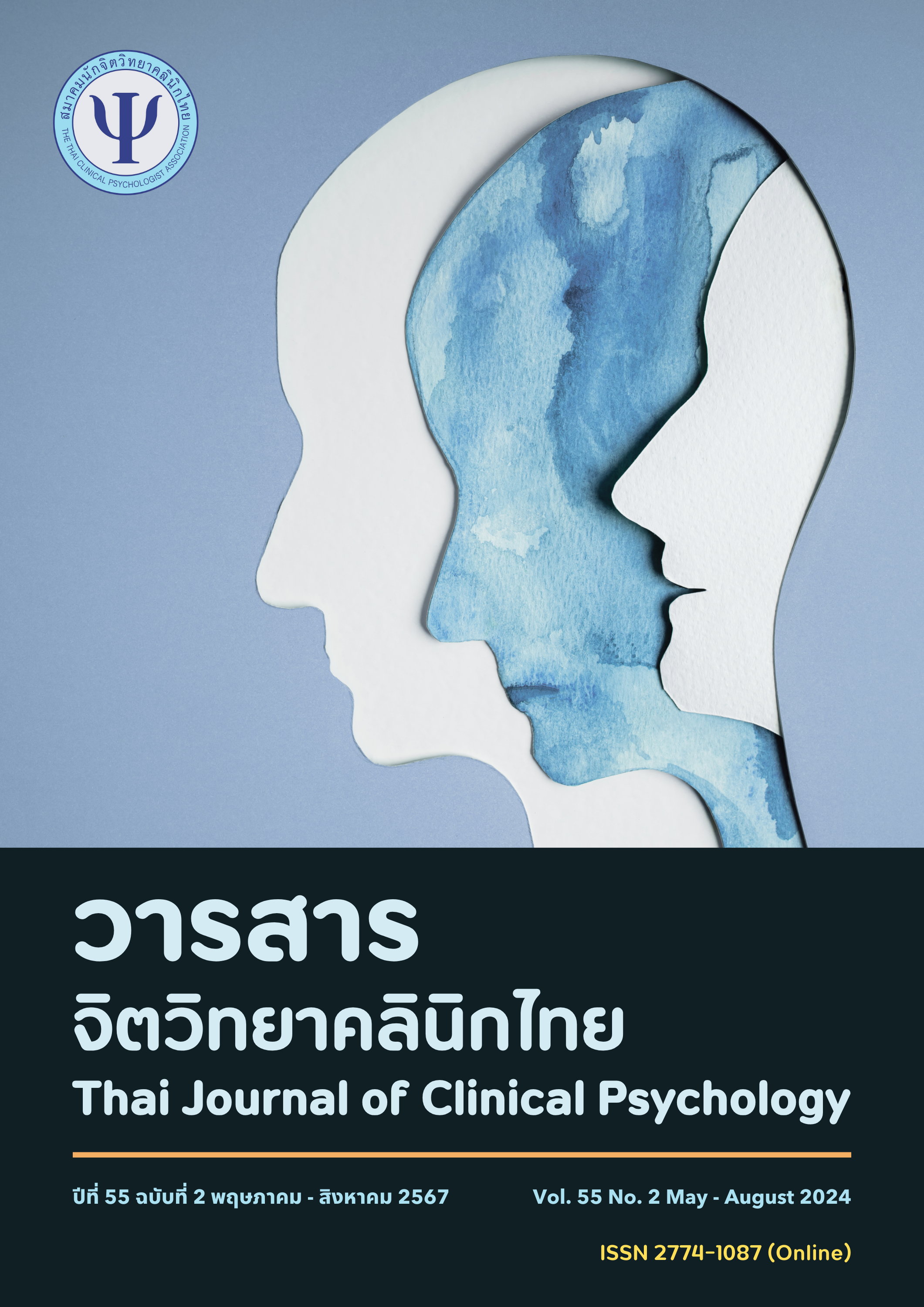การเรียนรู้ทางอารมณ์และสังคมช่วงวัยเด็กตอนต้น: ในบริบทประเทศไทย
Main Article Content
บทคัดย่อ
การศึกษาในต่างประเทศที่ผ่านมาพบว่า การเรียนรู้ทางอารมณ์และสังคมเป็นกระบวนการเรียนรู้ที่อาศัยปฏิสัมพันธ์ของบริบททางสังคมรอบตัว ซึ่งช่วยพัฒนาพฤติกรรมเชิงบวกและผลสัมฤทธิ์ทางการเรียน ตลอดจนนำไปสู่การป้องกันและแก้ไขปัญหาด้านพฤติกรรม อารมณ์และจิตใจในรูปแบบต่าง ๆ ของเด็กอย่างได้ผล แต่เมื่อย้อนกลับมาพิจารณาในบริบทของประเทศไทยแม้จะพบว่า มีการศึกษาและกล่าวถึงแนวคิดดังกล่าวอยู่บ้างแต่กลับยังไม่มีการนำมาใช้อย่างจริงจัง ไม่ว่าจะเป็นในรูปแบบของโปรแกรมหรือเครื่องมือที่มีความเป็นมาตรฐานเพื่อการประเมินพัฒนาการและการเรียนรู้ทางอารมณ์และสังคมของวัยเด็กตอนต้น
ผู้เขียนจึงต้องการผลักดันให้ผู้ที่มีส่วนเกี่ยวข้องทุกฝ่ายเล็งเห็นถึงความสำคัญและมีความเข้าใจเกี่ยวกับแนวคิดดังกล่าว โดยผู้เขียนได้ศึกษาแนวทางการสร้างโปรแกรมการเรียนรู้ทางอารมณ์และสังคมจากบทความวิชาการและงานวิจัยหลายประเทศท่ัวโลก ซึ่งพบว่า การสร้างโปรแกรมฯ มักใช้หลักการเซเฟอร์ด้วยเหตุนี้ผู้เขียนจึงได้ปรับปรุงหลักการดังกล่าวให้มีความสอดคล้องกับบริบทของสังคม เพื่อนำไปใช้ส่งเสริมการเรียนรู้ทางอารมณ์และสังคมของวัยเด็กตอนต้นในประเทศไทยได้อย่างมีประสิทธิภาพต่อไปในอนาคต
นอกจากนี้ผู้เขียนยังได้สังเคราะห์มาตรฐานการเรียนรู้ทางอารมณ์และสังคมให้มีความสอดคล้องกับพฤติกรรมบ่งชี้ของพัฒนาการด้านอารมณ์และสังคมของวัยเด็กตอนต้นในประเทศไทย เพื่อให้ผู้ที่สนใจสามารถนำไปใช้ในการสร้างแบบประเมินพัฒนาการและการเรียนรู้ทางอารมณ์และสังคมของวัยเด็กตอนต้นได้อย่างมีประสิทธิภาพต่อไปในอนาคต
Article Details

อนุญาตภายใต้เงื่อนไข Creative Commons Attribution-NonCommercial-NoDerivatives 4.0 International License.
เรื่องที่ลงตีพิมพ์ในวารสารจิตวิทยาคลินิกแล้วถือเป็นลิขสิทธิ์การเผยแพร่โดยวารสารจิตวิทยาคลินิกแต่เพียงผู้เดียว การตีพิมพ์หรือเผยแพร่ซ้ำในที่อื่นต้องได้รับอนุญาตจากกองบรรณาธิการวารสารฯ
เอกสารอ้างอิง
Agırkan, M., & Ergene, T. (2022). What does the social and emotional learning interventions (SEL) tell us? A meta-analysis. Revista de
Psicodidáctica (English ed.), 27(2), 97-108. https://doi.org/10.1016/j.psicoe.2022.02.002
Appel, H. B., Walsh, E., Marsh, T. E., & Brown, C. (2023). Supporting students’ mental health and social emotional learning through community engagement and collaboration. Educational Research, 65(3), 285-300. https://doi.org/10.1080/00131881.2023.2209097
Blyth, D., Oolsen, B., & Walker, K. (2015). Intentional practices to support social and emotional learning. University Digital Conservancy Retrieved from https://conservancy.umn.edu/items/a1094838-6d83-47e4-9316-cfa9f0cdfaa8
Chen, H., & Yu, Y. (2022). The impact of socialemotional learning: A meta-analysis in China. Frontiers in Psychology, 13. https://doi.org/10.3389/fpsyg.2022.1040522
Collaborative for Academic Social and Emotional Learning [CASEL]. (2015). CASEL guide: Effective social and emotional learning programs. https://www.academia.edu/download/36509629/2013-casel-guide.pdf
Collaborative for Academic Social and Emotional Learning [CASEL]. (2016). Safe and sound: An educational leader’s guide to evidence-based social and emotional learning [SEL] programs. Mid-Atlantic Regional Educational Laboratory. https://casel.org/safe-and-sound-guide-tosel-programs/?download=true
Collaborative for Academic Social and Emotional Learning [CASEL]. (2023). CASEL’s framework: What are the core competence areas and where are they promoted? https://casel.org/casel-sel-framework-11-2020/?view=true
Department of Early Education and Care. (2015). Social and emotional learning approaches. https://www.education.act.gov.au/supportfor-our-students/positive-behaviour-mentalhealth-and-wellbeing-approaches-in-ourschools/social-and-emotional-learningapproaches
Division of Mental Health Promotion and Development. (2017). Guidelines of child-rearing for adolescent mothers (Revised). Department of Mental Health. https://km.dmh.go.th/km/files/คู่มือการพัฒนาเด็กปฐมวัยส่งกระทรวง%20กย%2058%20%20pdf.pdf
Durlak, J. A., Weissberg, R. P., Dymnicki, A. B., Taylor, R. D., & Schellinger, K. B. (2011). The impact of enhancing students’ social and
emotional learning: A meta-analysis of school-based universal interventions. Child Development, 82(1), 405- 432.
Goldberg, J. M., Sklad, M., Elfrink, T. R., Schreurs, K. M. G., Bohlmeijer, E. T., & Clarke, A. M. (2019). Effectiveness of interventions adopting a whole school approach to enhancing social and emotional development: A meta-analysis. European Journal of Psychology of Education, 34(4), 755–782.
Humphrey, N. (2013). Social and emotional learning: A critical appraisal. Sage Publications,Ltd. Illinois State Board of Education. (2017). Children’s mental health: An urgent priority for Illinois. https://www.yumpu.com/en/document/view/35572099/childrens-mental-health-anurgent-priroity-for-illinois-state-boardInstitute of Medicine and National Research
Council of the National Academies. (2015). Transforming the workforce for children birth through age 8: A unifying foundation. The
National Academies Press.
Mulvahill, E. (2016). 21 Simple ways to integrate social-emotional learning throughout the day. Mental Health America. https://www.mhanational.org/blog/10-tipsfor-classroom-social-emotional-learning
National Assembly Library of Thailand. (2016). National Assembly Library of Thailand supported educational psychology and
vocational education institution. http://www.senate.go.th/w3c/senate/commit tee.php (in Thai).
Nurturing Early Learners, Ministry of Education, Republic of Singapore. (2013). A curriculum for kindergartens in Singapore: Social and emotional development, https://www.nel.moe.edu.sg/qql/slot/u143/Resources/Downloadable/pdf/nelguide/nel-edu-guide-social-emotionaldevelopment.pdf
Organization for Economic Co-operation and Development [OECD]. (2021). Beyond academic learning. OECD Publishing. https://www.oecd.org/education/ceri/social-emotional-skills-study/beyond-academic-learning-92a11084-en.htm
Wongupparaj, R. (2021). Development of social and emotional learning program based on SAFER and cooperative learning approaches to enhance social competence of kindergarteners. [Doctoral dissertation, Chulalongkorn University]. Chulalongkorn University Intellectual Repository (CUIR). https://digital.car.chula.ac.th/chulaetd/5108/ (in Thai)


